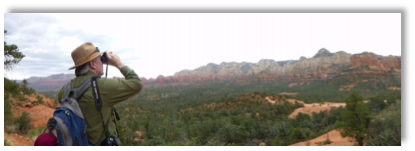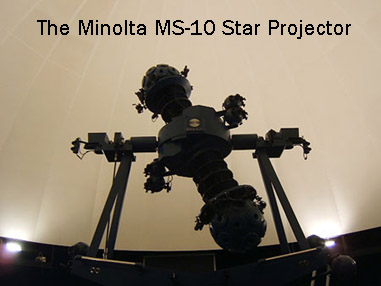
by Rex Parker, Director
May 10 is the AAAP Annual Meeting. Your attendance is requested at the May 10 meeting at Peyton Hall, Princeton campus. Once again it’s time to elect officers for the coming year (one-year term). A membership quorum is needed, so please participate in the vote. See the candidate slate elsewhere in this month’s issue.
I’d like to thank the officers and chairs for outstanding contributions to the club over the past season. We wouldn’t be the premier amateur astronomy organization in New Jersey without them and their efforts on behalf of AAAP. Deep appreciation goes to the following members:
- Ira Polans, Program Chair, and Prasad Ganti and John Miller, Program Committee members, for a year of interesting topics and outstanding speaker presentations.
- Michael Mitrano, Treasurer, and observatory-engineer par excellence.
- Larry Kane, Assistant Director for energy and spokemanship.
- Jim Poinsett, Secretary, for providing the minutes and up-to-date membership lists.
- Michael Wright and Surabhi Agarwal, for excellent and timely work as Co-Editors of Sidereal Times. Surabhi also redesigned the AAAP website this year.
- Bill Murray, for expertise and making the Planetarium a viable part of member training.
- Dave & Jenn Skitt and Gene Ramsey, Observatory Co-chairs, who have upgraded the observatory instrumentation and functions, and helped make public nights successful.
- David Letcher, Outreach Chair, for championing public and school outreach events.
- All of the keyholders, for making the observatory public nights successful and fun.
Seeking candidate for Co-Editor of Sidereal Times. A big thank you goes to Michael Wright, who is stepping down after serving over the past 6 years as co-editor with Surabhi Agarwal of the Sidereal Times, our official monthly newsletter. Michael was instrumental in developing ST from its old newsletter style into its current weblog format. We are seeking a member with the “right stuff” to edit, write, and manage contributions as co-editor along with Surabhi going forward. This is a very important position in AAAP because of its status in the club and internet visibility,. Please send me a note if interested.
Observe the Mercury transit on May 9 – History in the Making. All members and public are invited to come to the AAAP Observatory at Washington Crossing Park during the Mercury transit (assuming sky is at least partly clear). Arrive early in the morning if you want to see the beginning: first contact ~7:15 AM. The transit occurs through the morning and ends at last contact ~2:40 PM local time. Telescopes will be fitted with broad-band and H-alpha solar filters for safe observing as Mercury crosses the face of the sun. If we are successful on May 9, the Hastings-Byrne 6” refractor will have taken part in three Mercury transit observations over three centuries, a rare claim that few other telescopes or clubs can make!
We know a great deal about this telescope’s history thanks to research by John Church (see “Optical Designs of Some Famous Refractors” Sky & Telescope, Mar 1982, p. 302-8). Charles Hastings, physicist and teacher affiliated with Johns Hopkins and Yale, designed and made the doublet lens in 1878-9. During student years in Germany, Hastings attended lectures by Kirchoff and von Helmholtz, which lets us claim a special kind of “six degrees of Kevin Bacon” connection with some of the giants of physics! In 1880 the telescope was completed by John Byrne of NYC and installed in Charles Rockwell’s observatory in Tarrytown NY. It is documented that Rockwell took the refractor over the Pacific and observed the Nov. 7, 1881 Mercury transit in Honolulu, in the “Sandwich Islands”. In the early 1900s the telescope passed to Rutgers Univ, and it was acquired by AAAP in 1968. On Nov 10, 1973, John Church, Freeman Dyson, and Tullio Regge (IAS) observed and recorded the Mercury transit with this telescope. A successful observation on May 9, 2016 would make three Mercury transits in three centuries!

Planetarium Retro – Saturday Morning May 14. Another AAAP exclusive event will be held at the NJ State museum Planetarium, at 10:30 AM on May 14. Hosted by staffer and AAAP member Bill Murray, this is a sequel to the night sky refresher sessions held Feb. 13 and 20. At those sessions, several comments were directed towards the remarkable and high-precision, but seldom-used, Minolta MS-10 Star Projector. It would be interesting, several members noted, to compare the Minolta to the current digital-based sky system which has replaced it. Some features of the Minolta may actually be superior for displaying star fields and deep sky objects – and here’s our chance to find out. It’s suggested that you bring a pair of low-power binoculars to see whether you can go beyond naked eye resolution on the dome.
- May 14 at 10:30 AM at the Planetarium in Trenton (205 W State St.; park at dome level)
- For Keyholders & members to better understand the celestial sphere deep sky objects
- Bring low-power binoculars
Star Parties – Cherry Springs and Jersey Starquest. If you’d like to get away from light pollution with your telescope but wonder where to go and safely observe in public places, here are some opportunities to observe under some of the better skies in the northeast.
There is interest among members to attend this year’s Cherry Springs Star Party on June 2-5. Cherry Springs State Park in northern PA is a dedicated dark sky site and is astronomer-friendly with numerous 110-V AC electric outlets to power telescope equipment on the observing field. The event is sponsored by the Astronomical Society of Harrisburg, with registration costs $45/60 individual/family. There is on-site camping and motels within ~15 miles. Register on-line and let us know if you plan to attend. https://www.astrohbg.org/CSSP/
AAAP will host the annual Jersey Starquest in Hope NJ on Oct 28-30. The location at the Hope Conference and Renewal Center in northern Jersey (just north of Jenny Jump State Forest) offers a fine observing field with electricity under good skies, with modern bunkhouses, showers, and a lodge with kitchen facilities. So mark your calendar for Jersey StarQuest 2016. Registration will be walk-in with a modest pay-on-arrival fee.
New telescope search. What additional telescope would you like to use at the AAAP Observatory in Washington Crossing State Park? Thanks to the recent redesign and construction eliminating the south-end roof flap of the building, we can now co-mount a second telescope of any practical size alongside the historic Hastings refractor. Some options were discussed at the March board meeting, where the goal was set to find a high-quality telescope designed primarily for high power planetary and lunar and double star observing. It should also excel at seeing smaller deep sky objects such as planetary nebulae. We believe this class of telescope would be complementary to existing equipment and best fit the typical night sky conditions here. Specific suggestions and comments from members on what new telescope you’d like the club to acquire are welcome – please send me a note.
Astrophotography learning sessions. If you’re thinking about how to begin or to improve skills in astrophotography – either using club equipment or your own – we want to hear about it. Of course there are many aspects to the topic, including CCD camera and telescope/mount hardware options, image acquisition and camera control techniques, auto-guiding, and calibration and post-processing with software. So we need to hear from you about what your interests are and whether you would like to get on the learning curve – please comment.
I’ll close with a picture (below) taken locally this winter using an SBIG ST-10XME CCD camera (same type that the club owns) and a 12.5” modified Dall-Kirkham AGO astrograph on a Paramount-MX with guidescope. It is possible to break through light pollution with today’s astro technology! See www.rexparkerpixels.com

Horsehead Nebula Credit: Rex Parker

